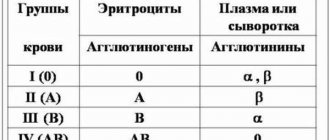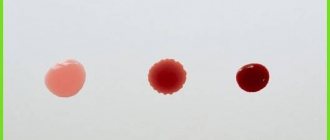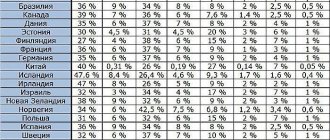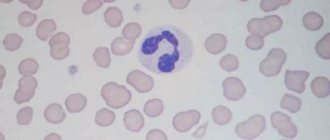1
Author of the article: Marina Dmitrievna
2017.10.03
64 012
Blood analysis
All people are divided into 4 types according to blood composition, which are usually called 1, 2, 3 and 4 blood groups (BG). They are distinguished by the presence/absence of certain types of proteins on the cell membrane of red blood cells (blood cells). Such information is of greatest importance when a transfusion is necessary for the victim (recipient), blood is urgently needed for donation to family and friends, for conceiving a child and for the normal course of pregnancy.
Blood transfusion
Blood through mutations and crossings evolved from the first to the fourth, which was obtained by merging the second and third groups. The 4th GC is represented by only 5-7 percent of people, so it is important to know its compatibility with other groups.
Division of blood into groups
Blood is a liquid connective tissue that contains blood cells - red blood cells, platelets and leukocytes. It is the presence of certain antigens on the membranes (shells) of red blood cells that is the factor according to which the blood is divided into 4 groups. These are protein and carbohydrate compounds called agglutinogens and agglutinins.
The division of blood into groups is classified according to the AB0 system. To have an idea about the antigenic characteristics of erythrocyte membranes, you need to know that blood is characterized by the presence of α and β agglutinins, and erythrocytes - A and B agglutinogens. One red blood cell can contain only one of the α or A elements (β or B, respectively). Therefore, only 4 combinations are obtained:
- 1st group (0) contains α and β;
- Group 2 (A) contains A and β;
- Group 3 (B) contains α and B;
- Group 4 (AB) contains A and B.
Carriers of the 1st group make up the majority - 41% of humanity, and the 4th - a minority - 7%. Not only what kind of blood can be transfused depends on belonging to the group, but also the physiological characteristics of the body (in particular, the gastrointestinal tract), and psychological traits.
Important! You can inherit the fourth blood group from parents who have the second, third or fourth HA, that is, those whose erythrocyte cell membrane contains antigens A and B. Therefore, if one of the parents is a carrier of the first group, the child will never have AB (IV ).
Blood groups
Video on the topic:
Blood type inheritance
A child inherits a strictly defined number of blood group combinations from his parents. Knowing the blood type of the parents, we can guess what blood type the baby will have.
A couple with the first blood types will never have a child with a blood type other than the first. For children of spouses with the second or third groups, all available diversity is possible, from the first to the fourth.
The table shows the options for inheriting blood type:
| Father | Mother | Child |
| O(I) | O(I) | O(I) |
| A (II) | O(I) or A(II) | |
| B (III) | O(I) or B(III) | |
| AB (IV) | A (II) or B (III) | |
| A (II) | O(I) | O(I) or A(II) |
| A (II) | O(I) or A(II) | |
| B (III) | Any (I, II, III, IV) | |
| AB (IV) | A (II), B (III), AB (IV) | |
| B (III) | O(I) | O(I) or B(III) |
| A (II) | Any (I, II, III, IV) | |
| B (III) | O(I) or B(III) | |
| AB (IV) | A (II), B (III), AB (IV) | |
| AB (IV) | O(I) | A (II) or B (III) |
| A (II) | A (II), B (III), AB (IV) | |
| B (III) | A (II), B (III), AB (IV) | |
| AB (IV) | A (II), B (III), AB (IV) |
History of the 4th group
The opinions of scientists regarding the relatively recent appearance (no earlier than the 11th century AD) of the 4th Civil Code are divided. But there are three main theories:
- Mutation of the 2nd and 3rd groups into the 4th as a result of the mixing of races: Indo-European and Mongoloid, which were characterized by individual characteristics that appeared during a long evolutionary process. This mixing began recently, which explains the youth of the fourth group.
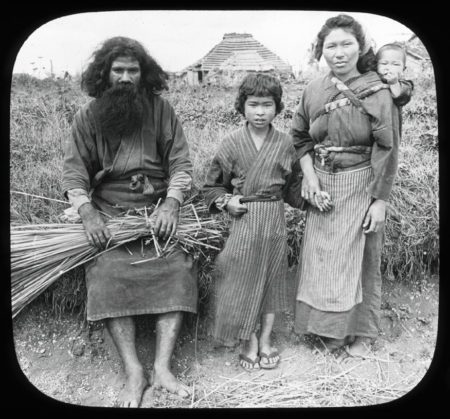
Mixed marriage of Indo-European and Mongoloid races
- Another version: the emergence of the 4th group is associated with humanity’s opposition to viruses that threatened the complete destruction of the earth’s population. The response to such attacks was the development of appropriate antibodies that combine A and B.
- According to the third theory, the young fourth group was formed as a defense for the body during the evolution of the culture of eating. As food processing methods became more complex, the need arose to combine antigens A and B, which should protect the body from unnatural food preferences.
Disagreements regarding the truth of the theory of the origin of the 4th group still exist in the scientific community. But there is unity regarding the rarity of this blood.
Interesting! Carriers of different HAs have characteristic agglomerations. The first and second groups are characteristic of the inhabitants of Africa and Europe, and the third - of Asia and Siberia. The 4th GC is characteristic of the inhabitants of Southeast Asia, Japan and Australia. Traces of AB (IV) were found on the Shroud of Turin.
Why select a donor's blood type?
The need to select donor biomaterial is a complex, intimate, taboo issue in society. Often couples come to us who want to keep it a secret. Matching the blood types of the donor and the partner becomes important due to the availability of blood group testing. It is important to understand that the blood type variations a child may have depend on the blood type of the parents.
Selection of donor by blood type for married couples
When selecting a sperm donor.
In this case, it does not mean at all that your choice should be strictly limited only to your spouse’s blood type. It is necessary to take into account the options for combinations of blood groups between spouses and choose a donor with a blood type that will give the same options. For example, if you have the fourth blood group, and the partner for whom the biomaterial is being selected has the second, then you should choose from donors with the second, third and fourth blood groups.
Or, suppose both spouses have the third blood group, then it is necessary to consider donors with the first and third blood groups.
| Male blood type | Woman's blood type | Sperm donor |
| O(I) | O(I) | O(I) |
| A (II) | O(I) or A(II) | |
| B (III) | O(I) or B(III) | |
| AB (IV) | O(I) | |
| A (II) | O(I) | O(I) or A(II) |
| A (II) | O(I) or A(II) | |
| B (III) | Any (I, II, III, IV) | |
| AB (IV) | A (II), B (III), AB (IV) | |
| A (II) | O(I) | O(I) or A(II) |
| A (II) | O(I) or A(II) | |
| B (III) | Any (I, II, III, IV) | |
| AB (IV) | A (II), B (III), AB (IV) | |
| B (III) | O(I) | O(I) or B(III) |
| A (II) | Any (I, II, III, IV) | |
| B (III) | O(I) or B(III) | |
| AB (IV) | A (II), B (III), AB (IV) | |
| AB (IV) | O(I) | AB (IV) |
| A (II) | A (II), B (III), AB (IV) | |
| B (III) | A (II), B (III), AB (IV) | |
| AB (IV) | A (II), B (III), AB (IV) |
When selecting egg donors
Here, too, you don’t need to limit yourself to a woman’s blood type. In this case, as when choosing a sperm donor, we select an egg donor based on the possible blood types of both spouses.
| Male blood type | Woman's blood type | Egg donor |
| O(I) | O(I) | O(I) |
| A (II) | O(I) or A(II) | |
| B (III) | O(I) or B(III) | |
| AB (IV) | AB (IV) | |
| A (II) | O(I) | O(I) or A(II) |
| A (II) | O(I) or A(II) | |
| B (III) | Any (I, II, III, IV) | |
| AB (IV) | A (II), B (III), AB (IV) | |
| B (III) | O(I) | O(I) or B(III) |
| A (II) | Any (I, II, III, IV) | |
| B (III) | O(I) or B(III) | |
| AB (IV) | A (II), B (III), AB (IV) | |
| AB (IV) | O(I) | AB (IV) |
| A (II) | A (II), B (III), AB (IV) | |
| B (III) | A (II), B (III), AB (IV) | |
| AB (IV) | A (II), B (III), AB (IV) |
Be that as it may, selecting a donor based on blood type remains an ethical issue. From a medical point of view, it does not matter.
The importance of Rh for people with 4 BG
An equally important issue during blood transfusion or conception of offspring is the Rh factor, which divides each GC into two subgroups: negative and positive.
We will talk about additional antigen D, which is also a protein product and is located on the erythrocyte membrane. Its presence is recorded in Rh-positive people, and its absence in Rh-negative people. The indicator is of great importance in determining blood compatibility.
People who do not have the Rh antigen have more pronounced immune defense reactions, for example, implant rejection or allergies occur more often.
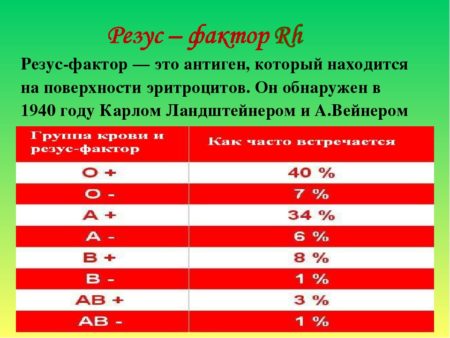
Prevalence of people by BG and Rh factor
Factors of blood compatibility between donor and recipient
One of the key conditions that determine the possibility of using the blood of a specific donor for a specific recipient is the compatibility of their blood groups.
A blood group is a specific set of proteins in the blood of a particular person, and in nature there are only 4 variants of such combinations. In accordance with this, it is customary to distinguish 4 main blood groups, which are designated by serial numbers, or codes, used in the AB0 system. Thus, the first blood group in this system is usually designated by code 0, the second by A, the third by B, and the fourth by AB. In addition to the blood group, there is another important condition that determines the compatibility of the donor and recipient for the transfusion procedure. We are talking about the presence or absence in the human body of a special D-antigen, which is called the Rh factor. Accordingly, the concept of a positive Rh factor refers to the presence of this gene in the body, and a negative Rh factor refers to its absence.
Rh factor compatibility
A recipient of a positive Rh factor can receive a transfusion of both positive and negative Rh blood, according to the erythrocyte compatibility table.
A recipient of a negative Rh factor is given a transfusion of only a negative Rh factor matching the blood group.
Cross match
Direct determination of compatibility is necessary to establish the fact of a reaction between the recipient's blood samples and the red blood cells in the donor's blood. This type of examination usually takes about 60 minutes, but if particularly necessary, this time can be reduced.
Blood type 4 is positive in children, women and men: what should be taken into account when transfusion
Karl Landsteiner's discoveries were important for the successful implementation of blood transfusions, since they help to avoid conflicts between the donor and recipient blood. Ignoring group and Rh compatibility during transfusion can end very badly for the recipient - coma and even death.
People with AB+ are in a relatively favorable position during blood transfusion. They are universal recipients because there are no antibodies in their blood. Blood of any type is suitable for them.
The only problem is that the donor is Rh negative. But there are much fewer people with Rh- than with Rh+. Usually donor blood is Rh positive. People with AB+ blood are bad donors. Their blood is suitable for transfusion only to recipients with the same group.

ABO system
At the end of the 19th century. Australian scientist Karl Landsteiner, while conducting a study of red blood cells, discovered an interesting pattern: in the red blood cells (erythrocytes) of some people there may be a special marker, which the scientist designated by the letter A, in others - marker B, in others neither A nor B were found. Later It turned out that the markers described by Landsteiner are special proteins that determine the species specificity of cells, or antigens. In fact, these studies divided all of humanity into 3 blood groups
The fourth group was described in 1902 by scientists Decastello and Sturli. The joint discovery of scientists is called the ABO system.
O (I) - first blood group
A (II) - second blood group
B (III) - third blood group
AB (IV) - fourth blood group
Fourth blood group (Rh positive): features of inheritance
The specificity of inheritance is subject to the laws of another Austrian scientist - Gregor Mendel. Group 4 can occur if both parents have a total presence of antigens A and B.
An accurate forecast is impossible. There are special tables that describe the probabilities of conceiving a child with a particular group, depending on the group characteristics of the parents.
However, we are talking about probability. For example, even if the father and mother have both AB, this will not necessarily mean AB blood type; the child may receive A or B.
As for Rhesus, in most cases (approximately 75%) Rh+ is inherited, even if one of the parents is Rhesus negative. People with 4 negative group are about one percent of the total number of people.
Which blood type is the rarest and why?
Blood group is a description of the individual antigenic characteristics of red blood cells, determined using methods for identifying specific groups of carbohydrates and proteins included in the membranes of red blood cells. The AB0 system is the main blood group system used in human blood transfusions. The AB0 system consists of 2 group erythrocyte antigens - agglutinogens A and B and 2 corresponding antibodies - plasma agglutinins a (anti-A) and b (anti-B). Various combinations of antigens and antibodies form 4 blood groups:
- group 0 ab (I) - there are no group agglutinogens on erythrocytes, agglutinins a and b are present in the plasma;
- group Ab (II) - red blood cells contain only agglutinogen A, agglutinin b is present in the plasma;
- group Ba (III) - red blood cells contain only agglutinogen B, plasma contains agglutinin a;
- group AB (IV) - antigens A and B are present on red blood cells, plasma does not contain agglutinins.
The AB0 blood group system is the main system that determines the compatibility (or incompatibility) of transfused blood, since these antigens are the most immunogenic. Patients who receive an incompatible blood type often experience a dangerous reaction: their immune system recognizes foreign antigens on the surface of red blood cells and attacks them. Meanwhile, during blood transfusion, another factor is taken into account - blood rhesus - an antigen that is located on the surface of red blood cells.
Scientists from the Stanford School of Medicine, USA, note that different blood types are more or less common and are distributed in the general population as follows:
- group 0 ab (I), Rh positive: 37.4%;
- group 0 ab (I), Rh negative: 6.6%;
- group Ab (II), Rh positive: 35.7%;
- group Ab (II), Rh negative: 6.3%;
- group Ba (III), Rh positive: 8.5%;
- group Ba (III) Rh - negative: 1.5%;
- group AB (IV), Rh positive: 3.4%;
- group AB (IV), Rh negative: 0.6%.
The prevalence of a particular blood type varies somewhat depending on a person's ethnicity. For example, blood type Ab (II) is more common in Asian populations than in Caucasians, while type 0 Ab (I) is more common in Hispanics. Although such calculations are only approximate, researchers note that blood type AB (IV) with Rh negative is the rarest.
Individuals with this blood type inherit the A gene from one parent and the B gene from the other. Based on the base number of people with such genes, the likelihood of the AB combination also being Rh negative is very low. In this case, persons with blood group AB are universal recipients, and those who have blood group 0 ab (I) are universal donors.
Based on materials from www.medicaldaily.com

